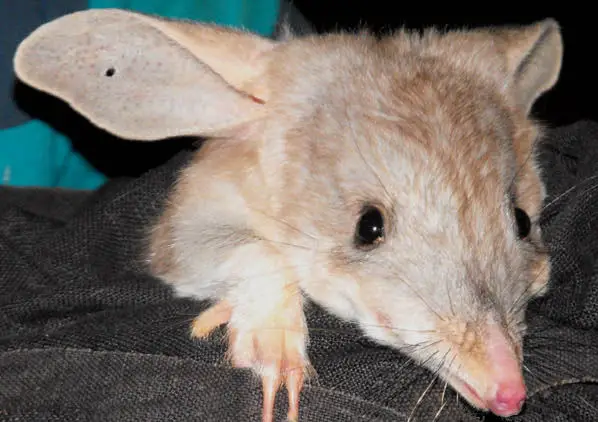Greater Bilby
Bilbies are small marsupials that live in burrows they’ve dug for themselves. In some parts of Australia the Bilby is also called Pinkie because of the animal’s bare, rosy nose. These small mammals have adapted to living in the deserts of Western and Central Australia and in the past they were widespread all over the continent.
Bilby is one of the smallest marsupials (animals with a pouch), reaching 30-55 cm for males and 29-39 cm for females. Its fur is long and silky, usually coloured gray, and sometimes with a hint of blue or golden. The nose is elongated, making it easier to catch bugs underground. Bilby’s ears are long and extremely sensitive and it’s what the animal relies on to find prey, unlike the eyes, which are poorly developed.
They live in dry territories, savannas with loose soil that make it easier for the Bilbies to dig holes. Unlike other small marsupials that find shelters on the ground, Bilbies dig burrows in which they rest until the evening, covering from the hot climate that governs the day. The burrows are one-entranced, with a spiral tunnel up to 1 metre deep that ends in a sleeping room. Unlike rabbits, who also dig their own holes, the Bilbies are not social animals and there is only one individual per hole, or as an exception it’s the mother with her children.
Bilby searches for food on and below ground level. Its diet consists mostly of a variety of bugs, although sometimes small birds, mice and lizards also become prey to this creature. The strong forelegs are suited for digging up larvae from the soil, while the elongated nose allows the Bilby to access rock gaps and small bug holes. As this animal lives in extremely dry areas where there are no practically freshwater sources, the Bilby acquires the necessary water through seeds and fruit.
Although they can mate all year round, most Bilbies give birth from March to May. Being solitary creatures, they only meet other individuals during the mating period. After a short gestation period, often only 14 days long, one to three babies are born. They’re very small and poorly developed, reminding more of an embryo and immediately after birth they climb in the mother’s pouch where they suck onto the pap and stay in this position for multiple weeks, up until the end of their development, which is around three weeks.
Up until the nineteenth century, Bilbies were widespread all over Australia. It changed when the first settlers from Europe came. Many areas were turned into cattle pastures, thus making the Bilby unable to live there. Also, foxes were introduced to the area, that quickly hunted out large populations of the Bilby, while at the same time rabbits became competitors for food with this small marsupial. Unfortunately, the population hasn’t still recovered and currently the number of this animals in the wild is very low.





